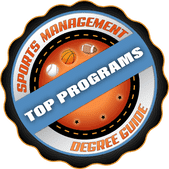Online Masters in Strength and Conditioning – CSCS Prep Included
Develop your strength and conditioning philosophy and prepare for the CSCS with the Strength and Conditioning concentration from Concordia University Chicago (CUC). Apply today!
Application Deadline: December 30, 2025
Classes Start: January 6, 2026

#3 Online Master’s in Sports Science
#11 Best Online
College 2024
$575 Per
Credit
Online Master’s Degree Program in Strength & Conditioning
Earn your Master’s in Strength and Conditioning from Concordia University Chicago. Use your advanced knowledge to elevate athletic performance.
Earn your Master’s in Strength and Conditioning from Concordia University Chicago. Use your advanced knowledge to elevate athletic performance.
Admission Requirements
- Bachelor’s degree
- 2.85 minimum GPA
- Objective statement
- Letters of recommendation
The CUC Advantage
A Culture of Integrity
Integrity lies at the heart of CUC’s ethos. Our faculty, staff and students are dedicated to living authentically, guided by their faith. Within our programs, students are empowered to demonstrate resilience and unwavering commitment to their academic pursuits.
Cost-Effectiveness
Esteemed Faculty
Exercise science courses are taught by experienced faculty with industry expertise. You can rest assured that you will be learning from the best.
Strength & Conditioning Career Outlook
Concordia University Chicago’s Strength and Conditioning concentration is expertly crafted for current practitioners, aspiring strength and conditioning coaches, personal trainers and athletic performance coaches. This comprehensive program not only meets but exceeds the National Strength & Conditioning Association (NSCA) certification requirements, equipping students for advanced certifications in a growing field. Students will delve into advanced topics in strength and conditioning theory while developing their own training philosophies. The field of strength and conditioning is rapidly expanding, offering exciting career opportunities as the demand for specialized training in athletic performance and injury prevention continues to rise.
Potential Careers
- Strength and Conditioning Coach: Work with athletes at all levels, from amateur to professional, to improve their physical performance through customized training programs focused on strength, power, speed, agility and conditioning.
- Athletic Performance Specialist: Provide specialized training and support to athletes in specific sports or activities, focusing on enhancing performance, reducing the risk of injury and optimizing recovery.
- Personal Trainer: Work with individuals or small groups to develop personalized exercise programs aimed at achieving fitness goals such as weight loss, muscle gain or improved athletic performance.
- Fitness Center Manager: Oversee the operations of a fitness facility, including staff management, program development, member engagement and facility maintenance.
- Exercise Physiologist: Conduct fitness assessments, prescribe exercise programs and provide lifestyle coaching to individuals with chronic conditions, such as cardiovascular disease, diabetes or obesity, to improve their overall health and quality of life.
Lock in Your Tuition!
As long as there are no interruptions in your course of study, we guarantee your tuition will remain the same and never increase while earning this degree. This guarantee ensures a stable and predictable investment in your education.
Don’t miss out on our Tuition Guarantee – enroll today!
Frequently Asked Questions
Related Articles
Student Testimonials
“The professors are super helpful. Two of my professors who were very meaningful to me were also athletic trainers. They would meet every few weeks and talk about the coursework and my job.Get to know your professors. They can help you with day to day or even land a job. Send an introductory email so stand out as a student. You can get to learn about how they are experts in their field.”
“Make that commitment that once you’re going to start the program that you are going to be dedicated to completing it and finishing it.”
“Be committed to see it through and give 100% because that’s really how you’re going to be able to take what you learn and apply it into a career setting.”
“It’s hard to get your masters and be a mom, to be working full time. But it’s a great sense of ‘yeah I did that, while working a full time job, it’s rewarding”.I would say Concordia and getting my masters was the jumpstart of what made me great today.”
“CISSN I passed with flying colors and I got over a 90%.” Getting your Masters degree prepares you to be an auto mechanic. When you get your Masters you learn how to build the car so it teaches you how to understand the scientific principles very deeply that surround these certifications.
I will tell you that it improved my practice a hundred times over just having a really strong grip on the scientific foundations that builds the certification. I was balancing 5 kids and owning a gym. The professors are good at working with adults who are working. The program is entirely doable and designed for working adults and that’s why you choose asynchronous online education.
A big thank you to all the amazing professors I had in my time at Concordia, I will tell you I really got my money’s worth out of that program. You are going to get out what you put in. If you put in the work you will reap the reward. You will make the connections you need to make. You will learn what you need to learn to be a better practitioner”
Elevate Your Career in Strength & Conditioning Today
Discover how CUC’s Master’s in Applied Exercise Science with a Strength and Conditioning concentration can empower you to excel in the growing field of athletic performance and fitness. Unlock your potential and take the next step toward advanced certifications and career success.



